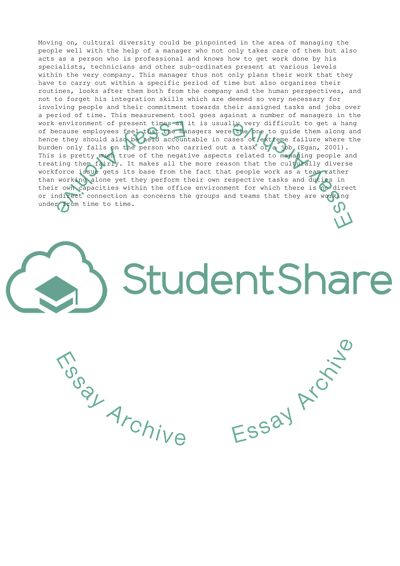Cite this document
(Management Through Leading and Creating an Environment Research Paper - 1, n.d.)
Management Through Leading and Creating an Environment Research Paper - 1. Retrieved from https://studentshare.org/management/1750450-why-is-it-important-for-managers-to-have-an-understanding-of-equal-opportunities-legislation-and-skills-of-managing-a-diverse-workforce
Management Through Leading and Creating an Environment Research Paper - 1. Retrieved from https://studentshare.org/management/1750450-why-is-it-important-for-managers-to-have-an-understanding-of-equal-opportunities-legislation-and-skills-of-managing-a-diverse-workforce
(Management Through Leading and Creating an Environment Research Paper - 1)
Management Through Leading and Creating an Environment Research Paper - 1. https://studentshare.org/management/1750450-why-is-it-important-for-managers-to-have-an-understanding-of-equal-opportunities-legislation-and-skills-of-managing-a-diverse-workforce.
Management Through Leading and Creating an Environment Research Paper - 1. https://studentshare.org/management/1750450-why-is-it-important-for-managers-to-have-an-understanding-of-equal-opportunities-legislation-and-skills-of-managing-a-diverse-workforce.
“Management Through Leading and Creating an Environment Research Paper - 1”, n.d. https://studentshare.org/management/1750450-why-is-it-important-for-managers-to-have-an-understanding-of-equal-opportunities-legislation-and-skills-of-managing-a-diverse-workforce.


